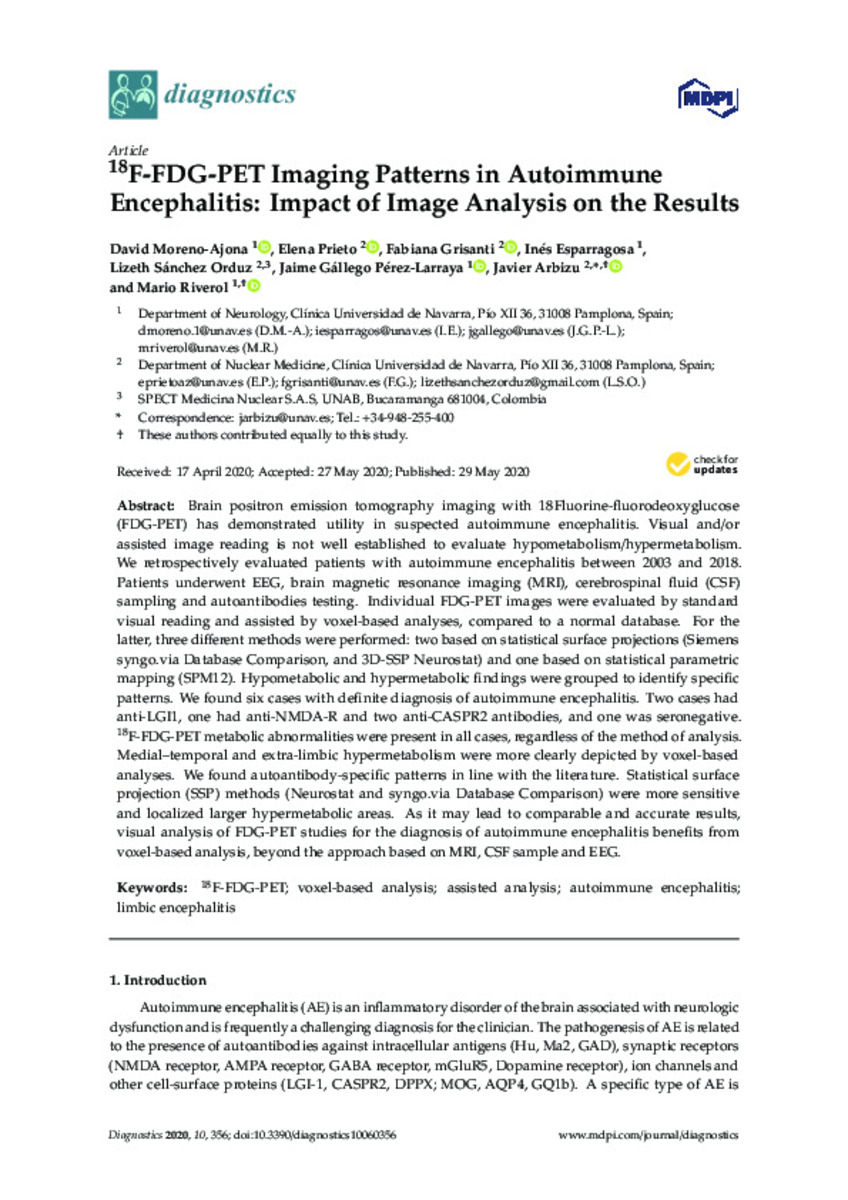18F-FDG-PET Imaging Patterns in Autoimmune Encephalitis: Impact of Image Analysis on the Results
Palabras clave :
18F-FDG-PET
Voxel-based analysis
Assisted analysis
Autoimmune encephalitis
Limbic encephalitis
Fecha de publicación :
2020
Nota:
This article is an open access
article distributed under the terms and conditions of the Creative Commons Attribution
(CC BY) license (http://creativecommons.org/licenses/by/4.0/).
Cita:
Moreno-Ajona, D. (David); Prieto, E. (Elena); Grisanti-Vollbracht, F. (Fabiana); et al. "18F-FDG-PET Imaging Patterns in Autoimmune Encephalitis: Impact of Image Analysis on the Results". Diagnostics. 10 (6), 2020,
Aparece en las colecciones:
Estadísticas e impacto
0 citas en

0 citas en

Los ítems de Dadun están protegidos por copyright, con todos los derechos reservados, a menos que se indique lo contrario.







